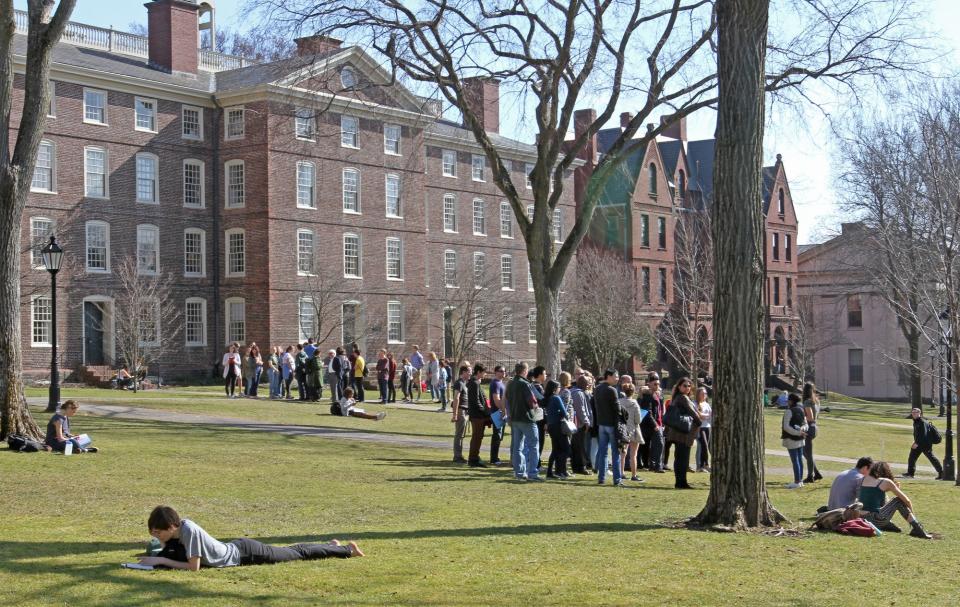Brown University may pay Providence less than it agreed to. Here's how.
PROVIDENCE – Brown University is one of four schools set to make hefty payments to the city to make up – at least a little – for their tax-exempt status. But Brown may not have to pay all it's expected to, thanks to a set of conditions in its tentative agreement with the City of Providence.
Brown is the only school that doesn't just have one agreement, but two. Both concern PILOTs, or payments in lieu of taxes. One, a memorandum of understanding, or MOU, covers Brown and three other schools, Providence College, Johnson & Wales University and the Rhode Island School of Design. Yet Brown has another arrangement of its own – a memorandum of agreement that outlines a $46-million payment over 10 years made in addition to payments made under the MOU.
More: Mayor Smiley's new plan has city's universities paying more. Here's how much.

How can Brown University lower its payments to the city?
Scan the MOA to find the seventh section and you'll see several ways the university can deduct sums from its voluntary payments to the city. Here's a quick summary:
Brown can shrink its payments by 50% of new tax revenue created annually by either of the following:
" ... direct development, provision of land, investment partnership, leasing of space in a new third-party commercial development and other similar actions by Brown" that boost tax revenue.
Putting property it owns back on the city's commercial tax rolls.
But there's more: The agreement says Brown may receive a 100% credit against its payments "in the full amount of direct investments in development projects" such as child care, workforce housing and public parks created in collaboration with the city.
The MOA goes on to note that Brown can choose a third-party accounting firm to validate its credits.
Why create the exceptions?
Mayor Brett Smiley's spokesman, Josh Estrella, said in an email that the section "allows the city to borrow from Brown University directly to fund investments in development projects" such as workforce housing, child care and public parks" and that "Brown would receive credit against its annual voluntary MOA payment equal to the amount directly invested into this development."
In short, the exceptions mean Brown can find alternatives to the $46 million in direct payments by contributing to the city in other ways.
Brown says MOA a 'clear incentive' for university to increase economic development
At a recent news conference on the PILOT payments, Brown President Christina Paxson described the MOA as including "clear incentives for Brown" to grow the city's tax base and increase economic development.
Under the MOU, Brown is set to contribute more than $128 million to the city, meaning it will contribute up to roughly $175 million in the next two decades if it pays all it can under the MOA.
Before the agreements can be made official, the City Council Finance Committee will need to finish vetting them, and the council will need to take them up. The City Council as a whole is likely to weigh the agreements by sometime in October.
This article originally appeared on The Providence Journal: Brown University's agreement with Providence – how the school may pay less

